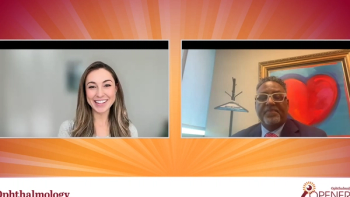
- Ophthalmology Times: September 15, 2021
- Volume 46
- Issue 15
Organ donation: "Dead donor rule" sets guidelines or harvesting organs
A word from Chief Medical Editor Peter J. McDonnell, MD.
A friend of mine, a physician, handed me a brief document. “You do transplant surgery,” she said. “You need to read this.”
The document is a “statement of concern” issued by the American College of Physicians (ACP). It describes a procedure termed “normothermic regional perfusion (NRP) with controlled donation after ccirculatory determination of death (cDCD).”
NRP-cDCD is performed in an effort to obtain healthier organs for donation when those organs are more susceptible to ischemic injury after cessation of circulation.
Keeping the organs perfused in situ allows additional time to assess the organ’s function before it is transplanted.
Performed in other countries, it is now being proposed for use in the U.S.
Previously by Dr. McDonnell:
The way NRP-cDCD works is that after a patient is deemed to have “circulatory death” (defined as death confirmed by the irreversible cessation of circulatory and respiratory functions), the chest is opened and the large vessels are connected to a bypass machine or ECMO (extracorporeal membrane oxygenation)-circuit.
Circulation of the blood is thereby restored to preserve the organs for donation, but only after the carotid and vertebral arteries are occluded to prevent cerebral reperfusion.
The heart may then resume beating, calling into question the determination of irreversibility that was required for the diagnosis of circulatory death.
Because the brain is denied a blood supply, the term “regional perfusion” is used, and brain death promptly ensues.
The ACP statement says this procedure called “organ retrieval after cardiopulmonary arrest and induction of brain death” and it questions the ethics of this approach.
The “dead donor rule” says that donors cannot be made dead in order to obtain their organs and that organ retrieval cannot cause death.
NRP does resuscitate the patient, except for the brain.
Related:
The ACP asks “Is declaring a patient dead by irreversible circulatory criteria, then rendering the patient brain dead before restoring circulation honest, transparent and respectful of patient autonomy and dignity?”
What if the donor or donor’s family had given consent? Can laypersons who are not physicians or medical experts be made aware of the full details of what this protocol involves?
The ACP says “informed consent by itself cannot confer ethical legitimacy on NRP-cDCD."
Moreover, standards of medical ethics do not permit consent to supersede all other ethical considerations.
There are existing alternatives. Organs can be harvested and subsequently reperfused using machines outside the body.
Related:
In what strikes me as a definite understatement, the ACP says “there is a large and ethically significant difference between perfusing an organ versus perfusing an individual.”
My driver’s license testifies to my willingness to be an organ donor should the situation arise. But I hope they do not do NRP-cDCD to me.
“So what is your response to this?” asked my physician friend.
“We do not do any of this with cornea donors,” I answered.
Articles in this issue
about 4 years ago
Study targets use of swept-source OCT to measure macular hole volumeabout 4 years ago
POAAGG study targets gene therapy options for glaucomaabout 4 years ago
COVID-19: The Chinese experience early in the pandemicabout 4 years ago
Study targets dry eye disease in postmenopausal womenabout 4 years ago
Corneal mechanical sensitivity in individuals with chronic painabout 4 years ago
Cataract surgery pearls for cases with poor mydriasis, zonulesover 4 years ago
Phone a friendNewsletter
Don’t miss out—get Ophthalmology Times updates on the latest clinical advancements and expert interviews, straight to your inbox.









































